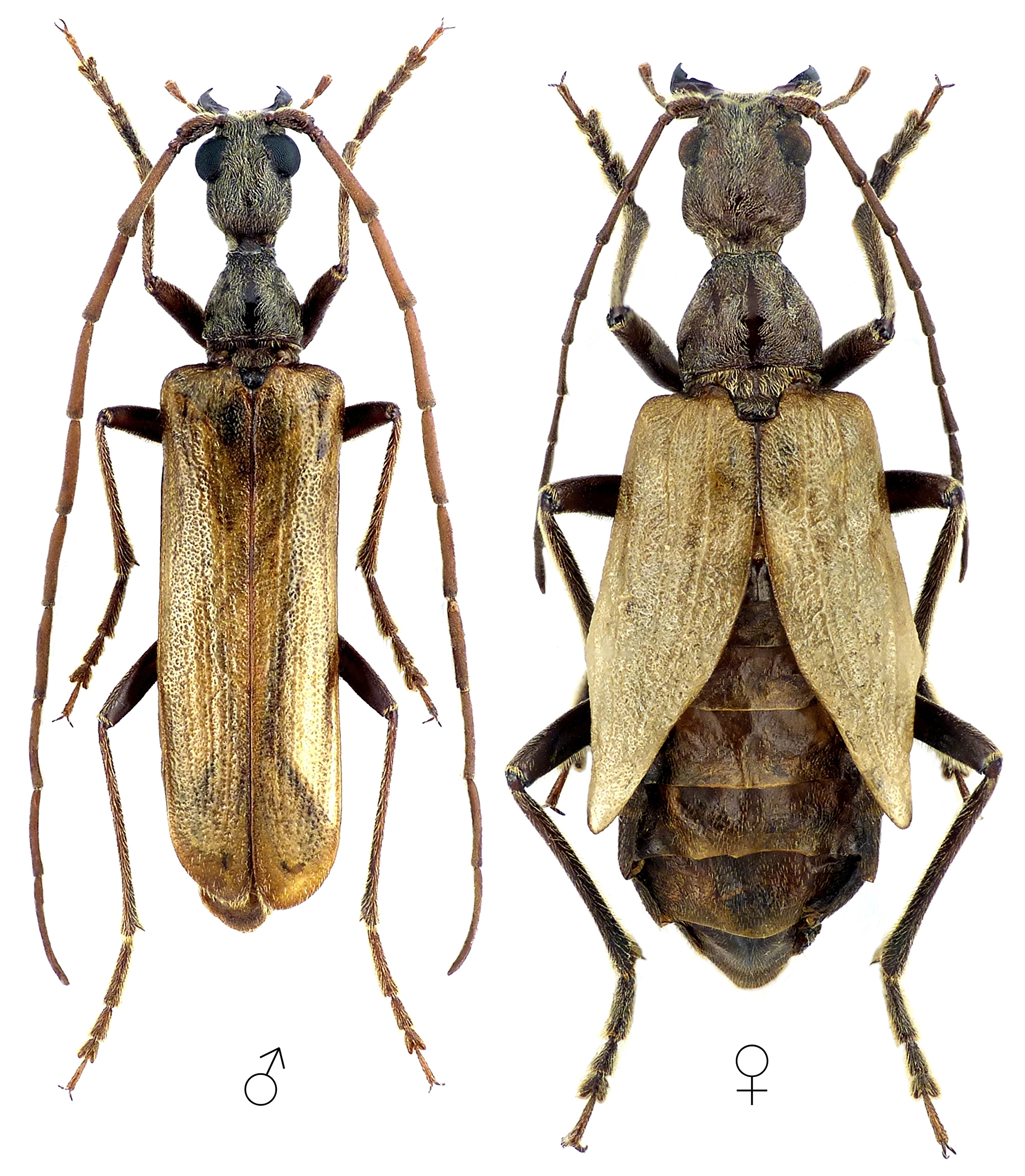Familia: VESPERIDAE / Subfamilia: VESPERINAE / Tribus: VESPERINI

[Photo © David Navrátil & 8K postprocessing M.Hoskovec]
Vesperus xatarti, a species known from Spain ans South-West France, has been described from Pyrénées Orientales by Étienne Mulsant in 1839 [❖]. Larvae of V. xatarti develops in ground at the roots of different plants (often reported from Vitis vinifera). Life cycle several years, with pupation in ground. Adults are active from early autumn over winter, especially in warm littoral areas. Adults are nocturnal - males fly (and can be attracted by light, especially ultra-violet), females (hidden under rocks during the day) move on the ground at night and attract males with a highly active sex pheromone. Mating occurs almost immediately after hatching, females lay eggs approximately six days later, and adult survival does not exceed 24 hours after copulation [▽].
Body length: ♂♂ 18 - 25 mm / ♀♀ 22-35 mm Life cycle: 3 and more years Adults in: October - March Host plant: polyphagous on roots of decidous trees and shrubs (Celtis, Vitis vinifera, Olea etc.) Distribution: S-W France (Pyrénées Orientales), Spain
The depicted beetles were collected in Maria de Huerva environs (Saragossa province, Aragon, Spain) on December 14, 2014.Collected by A.Murria and F.Murria
[❖]
Mulsant E.:
Histoire Naturelle des Coléoptères de France. Longicornes.
Paris, Maison: vii-xii + 304pp, 1839. [download]
[▽]
Vives i Noguera E.:
Révision du genre Vesperus Dejean 1821 (Coleoptera : Cerambycidae).
Annales de la Société Entomologique de France, Paris 40 (3-4): 437-457, 2005. [download]
| Familia | Vesperidae Mulsant, 1839 |
| Subfamilia | Vesperinae Mulsant, 1839 |
| Tribus | Vesperini Mulsant, 1839/TD> |
| Genus | Vesperus Dejean, 1821 |
| Species | Vesperus xatarti Mulsant, 1839 |
